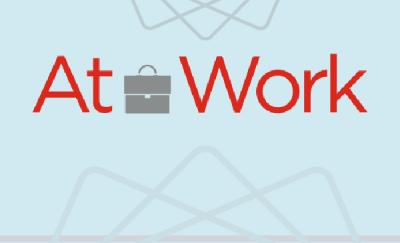Do Year-Round Schools Work? Three Questions to Ask



“[Y]ear-round calendars don’t raise academic achievement.” That’s the conclusion reached in a recent Education Next article that questioned the efficacy of year-round schools as a way to address declines in student achievement resulting from the COVID-19 pandemic. I concede that the evidence on year-round schools—as implemented in the studies referenced in this article—is not encouraging, but the key phrase in my admission is “as implemented.” Perhaps additional research could lead to the design of more promising versions of year-round schooling; we just have to be sure to ask the right questions. Here are three to start:
1. What components of a given initiative do result in desired outcomes, and for whom?
When we consider existing evidence, it’s important to pay attention to the context of the studies and the goals of the initiative that’s being examined. As the authors note, nearly all year-round schools in the United States have 180 school days at most. That’s because in-school and vacation days are spread more evenly throughout the year, rather than adding days of instruction. Many districts have implemented year-round schools to alleviate overcrowding: they send students to school on staggered schedules. Often, the goal of these year-round school programs is to save construction costs (by having more kids use the same functioning facilities throughout the year) rather than improve student achievement.
It is hardly surprising that year-round schools don’t have a positive impact on student learning when they don’t increase instructional time; the available evidence suggests it would be wise to design the calendar in a way that does increase instructional time. A recent meta-analysis of the No Child Left Behind Act indicated that extending learning time is associated with greater gains in achievement. Other studies have demonstrated that increasing instructional time helps first-graders in reading and high school students in algebra.
These studies get at an additional consideration for educators: who are the intended beneficiaries of the initiative? Year-round schools, by design, target all students within a given school. If the goal is to address achievement gaps, implementing year-round calendars for low-performing schools is one approach. If it’s more desirable to target individual students who need support, summer school or tutoring programs might be better options.
2. How will students, families, and school staff respond to extended learning opportunities?
All the initiatives in the world aren’t going to help if students don’t participate. Year-round schools might be unappealing to families with multiple children on different school calendars. Recent evidence suggests parents aren’t particularly interested in tutoring opportunities for their children. Summer school opportunities could be a hard sell for students looking for a more relaxed vacation.
Some observers have speculated that parents’ lack of awareness when their children are doing poorly might explain the lack of enthusiasm for extended learning opportunities. It’s possible that parents may be unaware that their child is not on track, especially if grades are inflated or if states, districts, and schools downplay disappointing assessment results.


A first step forward is to conduct focus groups to better understand students’ and families’ concerns. For example, working parents might be concerned about finding childcare during multiple school vacations if their child is in a year-round school. In a study that found students and parents responded positively to year-round calendars, the researchers recommended providing quality inter-session activities. Doing so could alleviate parental concerns.
Discussions with the community may reveal that awareness of extended learning opportunities is low, or that students are concerned about how they’ll be perceived if they enroll in an optional academic program. One approach is to make extended learning opportunities opt-out instead of opt-in, a form of nudging. Some might consider nudges manipulative or paternalistic, but the approach may have value in making extended learning opportunities more visible and help overcome student concerns by normalizing participation in extended learning.
3. Are there less expensive approaches to achieve similar outcomes?
Increasing instructional time—year round—may be a costly initiative. In-person, year-round school involves paying building staff and administrators as well as teachers for additional time, as would summer school. In contrast, tutoring may be a more cost-efficient approach to improving student achievement in core subjects such as math and reading. One caveat is that we have limited evidence regarding the impact of different approaches. Since it is not yet clear what approach would be most effective to help students recover from educational losses due to COVID, districts might want to consider collecting information on a broader set of outcomes, and over a longer period of time, to more thoroughly assess the relative costs and benefits of different programs.
As schools and district seek to improve education outcomes, evidence can help inform decisions about what approaches to adopt, whether to scale up, and when to discontinue and reallocate funds to a more promising approach. Educators can use available evidence to reflect on how to best implement an approach and to identify key components of an initiative. In some cases, evidence may indicate that benefits are greater (or less) for certain groups of students. Combining this information with an understanding of the intended beneficiaries or students most in need of support can generate more targeted and efficient approaches to improving outcomes. School and district leaders can also do targeted outreach to ensure they are addressing the concerns of these intended beneficiaries. All of which is to say, there’s more to learn about the efficacy of year-round schools.
Read More
Education, Youth & Families in North America

Bridging Research & Practice: Actionable Insights for Educators
The Institute of Education Sciences’ What Works Clearinghouse wanted a systematic review of evidence on interventions designed to improve the social, emotional, and behavioral outcomes of students in kindergarten to grade 12. Abt Global and our partners…

Abt Evaluates New Orleans Educator Preparation Programs
Abt is evaluating the New Orleans Supporting Effective Educator Development project.

The American Evaluation Association (AEA) Evaluation24 Conference
Abt Global is exhibiting and presenting at the American Evaluation Association (AEA) Evaluation24 Conference in October 2024.
